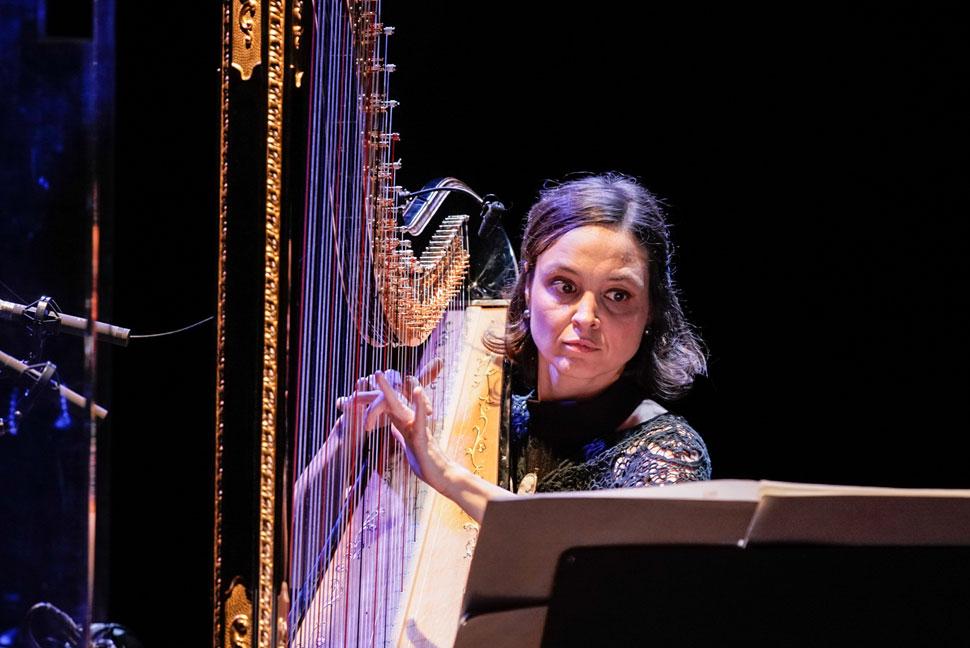This concert features one of the most fascinating instruments that embody harmony and one of the most ancient, boasting thousands of years of history but alternate fortunes in the history of music, capable of covering many different genres – classical, folk, pop – but used rather parsimoniously to our day. Also featured is the potential of electronics that has distinguished musical experimentation from the late twentieth century to the present day.
Harpist Emanuela Battigelli, a remarkable soloist usually playing in chamber music formations and in collaboration with major orchestras such as the Berliner Philharmoniker, the London Philharmonia and the Orchestra del Teatro alla Scala, performs three new pieces commissioned by the Biennale to Michele Sanna, Daniele Bravi, Maurizio Azzan, an Italian premiere by Malika Kishino and a piece by Daniela Terranova.
A metaphor for an abstract imaginary place, Dove tutto è possibile by Michele Sanna turns the harp into a machine that generates sound to reach into unexplored territories.
In Wood Metal Strings by Daniela Terranova, the exploration of the very material of which the instrument is made is key to a score that takes shape as sonic imagination in relation to the many ways – including gesture – used to produce sound.
The harp then becomes the image of vitality, like a lotus flower growing out of the mud until it finally “blossoms” in Éclosion (which translates as “blossoming”) by Malika Kishino.
In Dove tutto è stato preso II, Maurizio Azzan uses saturation to transcend the history of the harp and make all the memories that encrust and consume the sound of the instrument implode all at once.
L’eco dell’immediato svanire by Daniele Bravi gives form in sound to a paradox of time, in which the performer’s action dissipates before it even takes place as it is whisked away from its future.
